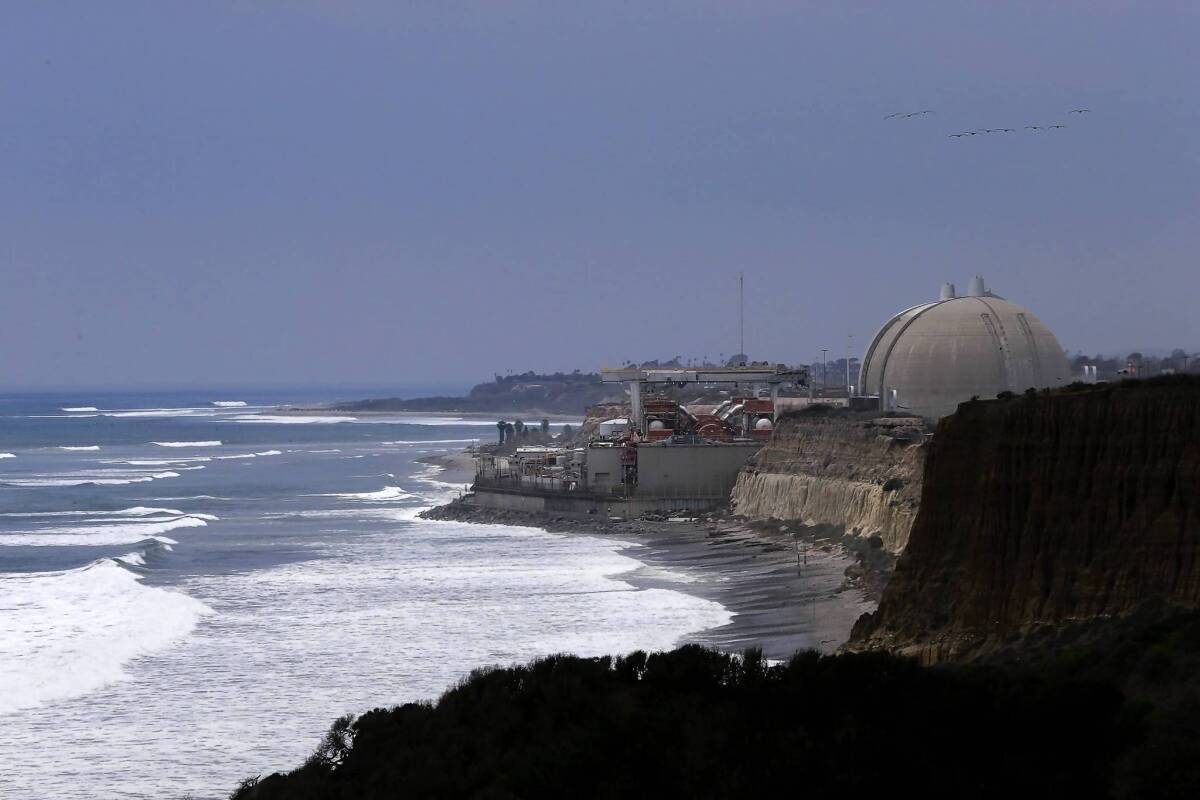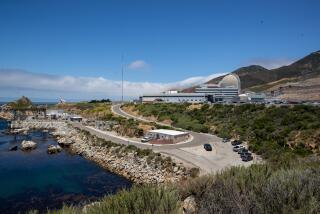San Onofre nuclear power plant to be closed permanently

Southern California Edison announced Friday it is permanently shutting down the troubled San Onofre nuclear plant, ending the region’s four-decade venture into nuclear energy production.
The decision caps a 16-month debate about San Onofre’s future but leaves the utility and state regulators grappling with who will ultimately pay more than $1 billion in costs.
One key question is whether Edison’s ratepayers will see their bills increase as a result of either the shutdown or the need to purchase more expensive imported electricity to make up for what was lost from San Onofre.
Edison cited the mounting costs of the outage as the driving reason for retiring the plant.
The decision to close the plant for good means state officials must now move ahead with plans for a long-term energy future without the facility that once supplied power to about 1.4 million homes. The shutdown also means that 1,100 workers at the plant will lose their jobs.
The San Onofre Nuclear Generating Station has been closed for more than a year after a tube in its newly replaced steam generator system leaked a small amount of radioactive steam into the atmosphere.
The leak led to the discovery that hundreds of tubes were wearing out at an unusual rate.
Edison asked the U.S. Nuclear Regulatory Commission in October for permission to restart one of the plant’s two units at 70% power and run it for a limited period, hoping that operating it at reduced power would alleviate the conditions that led to the tube wear.
The request became enmeshed in multiple regulatory processes, including a debate over whether Edison would have to go through a lengthy license amendment process with trial-like hearings before restart. The California Public Utilities Commission also launched an investigation into the costs of the outage, an ongoing process that could lead to refunds to customers.
Edison International Chief Executive Ted Craver said in a call with reporters Friday that the plant’s fate was sealed by a ruling last month making clear that the regulatory processes would probably stretch well into next year or beyond.
“The problem is, the longer the plant sits idle waiting for a definitive yes or no answer, we’re racking up essentially double costs,” he said.
Edison has been paying the cost of replacement power — which Craver said has soared to more than $500 million to date — as well as for the plant’s ongoing operation costs, totaling about $800 million, while the plant sat idle.
Last month, a panel of judges convened by the NRC ruled that the restart plan constituted a de facto license amendment process “subject to a hearing opportunity.”
“That was very definitive for us, because that’s the ruling that made clear we were going to have a much more uncertain process,” Craver said.
Antinuclear activists and U.S. Sen. Barbara Boxer (D-Calif.) — the plant’s highest-profile critic — celebrated Edison’s announcement that the plant will be shut down for good.
“I am greatly relieved that the San Onofre nuclear plant will be closed permanently,” Boxer said in a statement. “This nuclear plant had a defective redesign and could no longer operate as intended.”
Boxer has called on the U.S. Department of Justice to investigate whether Edison misled regulators about the extent of design changes in the new generators. The NRC’s office of investigations and office of inspector general were already separately probing whether there was any wrongdoing. Edison said it followed all regulations and industry standards in replacing the generators.
Donna Gilmore, a San Clemente resident who runs a blog focused on safety issues at the plant, said: “I’m in disbelief that this has finally happened. I expected it to be a much longer battle.”
Some saw the decision to close San Onofre as a blow to the continued viability of nuclear power in California and the nation. The only other nuclear plant in California is Diablo Canyon in San Luis Obispo County.
San Onofre is the third nuclear plant to be retired this year. The Crystal River plant in Florida also retired because of botched equipment replacement, and the Kewaunee plant in Wisconsin shut down for economic reasons.
“It has great national implications and is a real strong message that this nation does not need nuclear power,” said Shaun Burnie, a campaigner on nuclear issues with the environmental group Friends of the Earth, which invested a large amount of resources into fighting to keep San Onofre closed.
Steve Kerekes, a spokesman with the Nuclear Energy Institute, disagreed, saying the circumstances at San Onofre were unique.
“This is a blow to California’s energy diversity but is not an indicator of the industry’s larger ability to reliably supply low-carbon electricity to hundreds of millions of electricity consumers from facilities operating in 31 states,” he said.
Although San Onofre’s reactors will not fire up again, the waste will be stored on site for the foreseeable future. Fuel has already been removed from one of the plant’s two units. It will be removed from the other unit and placed into spent fuel pools and eventually into long-term storage in dry casks.
Edison has been paying into a fund to cover the costs of decommissioning the plant. Craver said the fund stands at $2.7 billion, which will cover about 90% of the decommissioning process.
The plant’s closure will also lead to layoffs of most of the plant’s employees. Edison said it will downsize the plant’s workforce — already reduced by layoffs this year — from 1,500 to 400.
Edison replaced the plant’s steam generators in 2010 and 2011 in a bid to extend the plant’s life because tubes in the old steam generators were wearing down. The project cost Edison and San Diego Gas & Electric — the plant’s minority owner — a combined $768.5 million, passed on to ratepayers.
Edison argued at the time that the project would end up saving customers money because the power produced at San Onofre is significantly cheaper than building new plants or importing electricity from other parts of California and the West.
Craver said that if the steam generators not been replaced, the plant’s two units would have been shut down in 2012 and 2015 because of wear on tubes in the old steam generators.
Edison has been in a dispute with Mistubishi Heavy Industries, which built the new generators, over how much that company should pay for all the problems.
The California Public Utilities Commission is examining the costs of the steam generators as well as other plant costs as part of its ongoing investigation. PUC President Michael Peevey — a former Edison president — urged the utility, ratepayer advocates and other stakeholders to meet and work out a proposed settlement to “potentially avoid a protracted litigation that could delay refunds to ratepayers and extend uncertainty for electric system planners.”
Meanwhile, the PUC, along with other state agencies and Edison, will move forward with long-term plans for an energy future without the plant. The state’s grid operator, California Independent System Operator, had already been working on the assumption that the plant would be out of service this summer.
Executive Director Steve Berberich said that with transmission upgrades and other system improvements in place, Southern California should have an adequate reserve of power without San Onofre, unless fires or other unexpected circumstances take out transmission lines or other facilities.
Times staff writer Anh Do contributed to this report.
More to Read
Start your day right
Sign up for Essential California for news, features and recommendations from the L.A. Times and beyond in your inbox six days a week.
You may occasionally receive promotional content from the Los Angeles Times.







